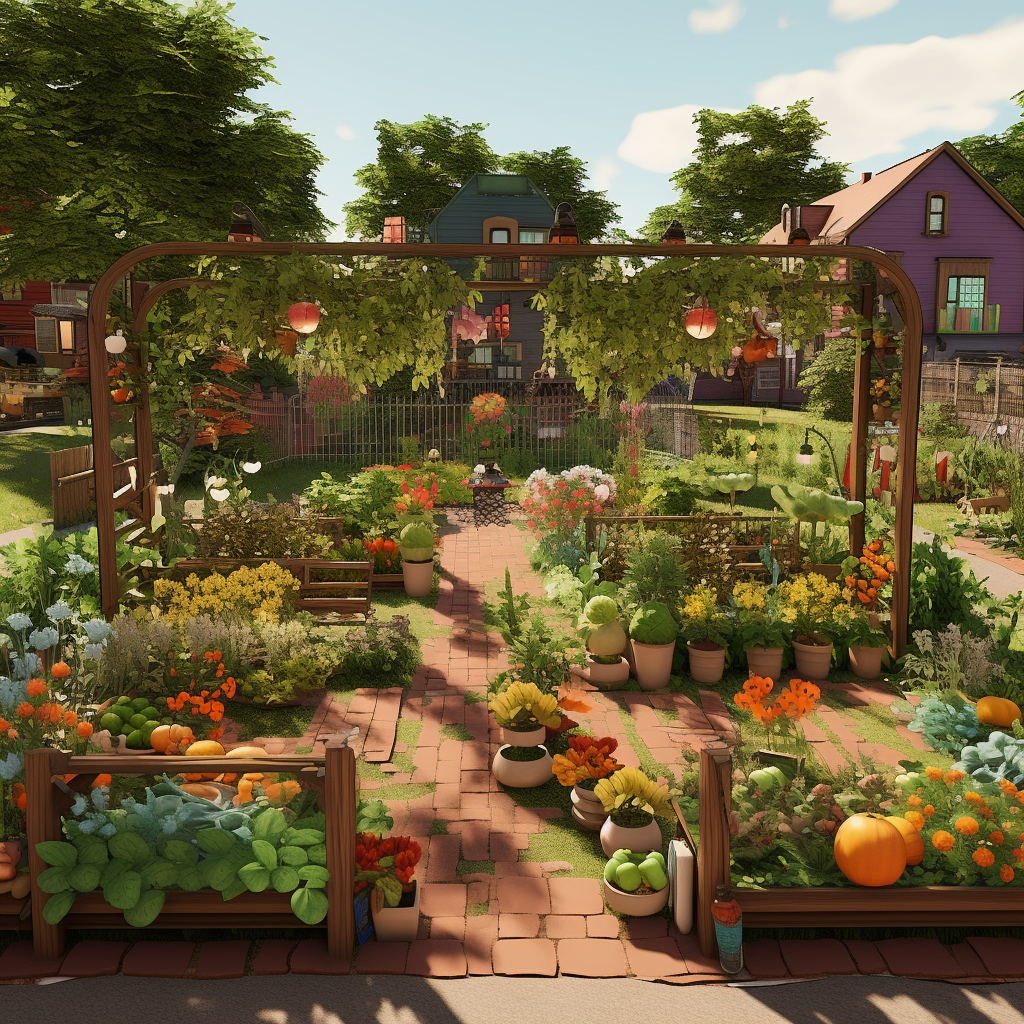The Garden of Eatin’: Discover the Secret to Free Food in Community Gardens

Have you ever come across individuals on the internet who appear to be masters of multitasking? They effortlessly juggle healthy living, financial savings, and community contributions simultaneously. Guess what? You can achieve the same! The secret lies right in your neighborhood – community gardens. These green spaces are not just for beautification, they’re a secret source of free, fresh produce waiting to be harvested. In this blog post, we’ll reveal how you can get involved in community gardens and start feasting on free food. So, let’s dig in!
Discovering Your Local Community Garden
First things first, you need to find a community garden near you. Many cities have these hidden gems tucked away in neighborhoods, parks, and even rooftops. Websites like the American Community Gardening Association can help you locate gardens in your area. Alternatively, your local council or community center may have information.
Once you’ve found a garden, take a visit. Get a feel for the place, the people, and the plants. Remember, every garden has its own unique vibe and rules, so it’s important to respect that.
Getting Your Hands Dirty
Community gardens are all about participation. They thrive on the collective effort of the community. So, roll up your sleeves and get ready to plant, water, weed, and harvest. Not only will you be contributing to the garden, but you’ll also be learning valuable gardening skills.
Don’t worry if you’re a gardening newbie. Most community gardens welcome beginners and are more than happy to teach you the ropes. Plus, there’s something incredibly satisfying about watching something you’ve planted grow and thrive.
Harvesting the Fruits (and Vegetables) of Your Labor
Here’s where the ‘free food’ part comes in. Most community gardens operate on a ‘you reap what you sow’ principle. This means that if you contribute to the garden, you’re entitled to a share of the harvest. Imagine walking home with a basket full of fresh, organic produce that you helped grow. It doesn’t get much better than that!
Remember, the key to a good harvest is patience and care. Plants need time to grow and bear fruit. So, while you’re waiting for your veggies to ripen, why not try your hand at growing herbs or flowers? They’re usually quicker to grow and can add a splash of color to your garden (and your meals).
Building Community Connections
Community gardens are not just about growing food, they’re about growing connections. They’re a place where people from all walks of life come together to share a common passion for gardening. You’ll meet new friends, learn from experienced gardeners, and feel a sense of belonging to your community.
So, don’t be shy. Introduce yourself, join in on garden activities, and share your own gardening tips and tricks. Remember, the more you put into the community, the more you’ll get out of it.
Giving Back to the Community
One of the most rewarding aspects of community gardening is the opportunity to give back. Many gardens donate a portion of their harvest to local food banks or community kitchens. This means that by participating in the garden, you’re not only feeding yourself but also helping to feed others in need.
So, next time you’re harvesting, why not pick a few extra veggies for donation? It’s a small act that can make a big difference in someone’s life.
Growing Your Own Garden
Once you’ve got the hang of community gardening, why not start your own? It could be a small herb garden on your windowsill, a vegetable patch in your backyard, or even a shared garden in your apartment complex. The skills and knowledge you’ve gained from the community garden will be invaluable.
Plus, growing your own garden means more free food! And who knows, you might even inspire others to start gardening too.
The Environmental Impact
Community gardens are not just good for your wallet and your stomach, they’re good for the planet too. They reduce food miles, promote biodiversity, and improve air quality. Plus, they’re a great way to combat the ‘concrete jungle’ effect in urban areas.
So, by participating in a community garden, you’re not only getting free food, you’re also contributing to a healthier, greener planet.
The Health Benefits
It’s no secret that fresh, organic produce is good for your health. But did you know that gardening is a great form of exercise too? It’s a fun, low-impact way to stay active and get your daily dose of vitamin D. Plus, the act of gardening has been shown to reduce stress and improve mental wellbeing.
So, not only are you getting free food from the community garden, you’re also getting a free workout and a mood boost. Talk about a win-win!
The Future of Community Gardens
Community gardens are more than just a trend, they’re a movement. They’re changing the way we think about food, community, and the environment. And the best part? Anyone can get involved.
So, why not join the movement? Start exploring your local community garden today and discover the secret to free, fresh, and sustainable food.






